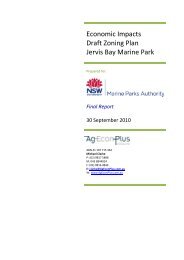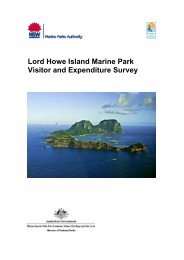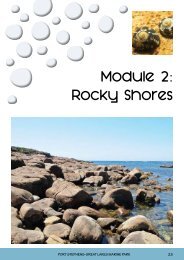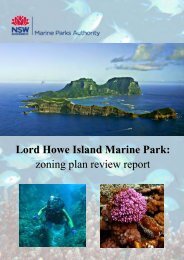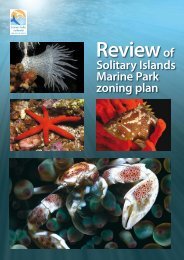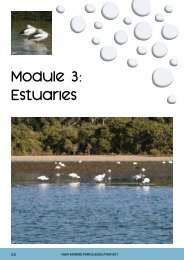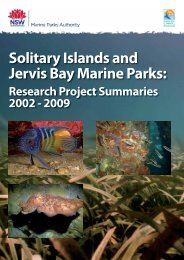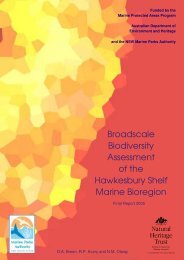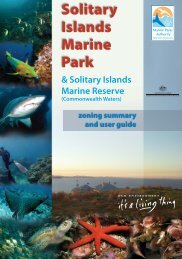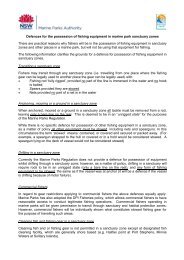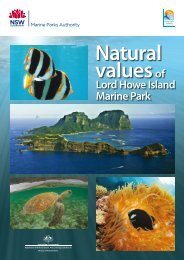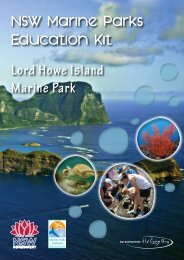Natural values of the Solitary Islands Marine Park - Marine Parks ...
Natural values of the Solitary Islands Marine Park - Marine Parks ...
Natural values of the Solitary Islands Marine Park - Marine Parks ...
- No tags were found...
Create successful ePaper yourself
Turn your PDF publications into a flip-book with our unique Google optimized e-Paper software.
6 <strong>Natural</strong> <strong>values</strong> <strong>of</strong> <strong>the</strong> <strong>Solitary</strong> <strong>Islands</strong> <strong>Marine</strong> <strong>Park</strong>Figure 5.Deploying a hydrophonelistening station and a seatemperature logger.Figure 6.An example <strong>of</strong> dailyvariation in seatemperature (North<strong>Solitary</strong> Island 8/3/02 and9/3/02), showing a 4.5 o Cdifference in less than24 hours, for temperaterecorded every 30 minutes.Currents vary on a range <strong>of</strong> temporal and spatial scales. Fluctuations over a few daysto weeks occur in response to <strong>the</strong> passage <strong>of</strong> wea<strong>the</strong>r systems, with water circulationin sheltered inshore waters <strong>of</strong>ten dominated by tides and local winds. Broader regionalfluctuations over months occur in response to seasonal and large-scale changes inoceanography. These changes are superimposed on longer-term cycles such as ElNino, or on decadal-scale cycles.There is considerable variation in <strong>the</strong> exposure <strong>of</strong> <strong>the</strong> coastline to swells in some areas,due to its complex shape and <strong>the</strong> presence <strong>of</strong> shallow <strong>of</strong>fshore reefs. The obliqueaction <strong>of</strong> predominant sou<strong>the</strong>rly swells hitting <strong>the</strong> coast can also set up a northwardsweep around <strong>the</strong> headlands and along <strong>the</strong> beaches. This current is responsible fortransporting sediment northward along <strong>the</strong> nor<strong>the</strong>rn NSW coast.Based on long-term data collected from three Waverider buoys located <strong>of</strong>fshore innor<strong>the</strong>rn NSW, <strong>the</strong>re is little variation in mean monthly wave height across <strong>the</strong> year,with <strong>the</strong> highest mean wave height occurring in March (1.8 metres at Byron Bay)and <strong>the</strong> lowest in December (1.4 metres at C<strong>of</strong>fsHarbour). However, large waves over 4 metres highare more common in winter, with wave directionusually from <strong>the</strong> south-east through to <strong>the</strong> east.Occasionally, a north-east swell can result fromintense low pressure systems forming locally in <strong>the</strong>Coral Sea (Figure 7).Tides are semi-diurnal, with a maximum tidal range<strong>of</strong> 2 metres (Middleton 1996). Low tides <strong>of</strong> lessthan 0.3 metres generally occur during night-timein winter and during <strong>the</strong> afternoon in summer(Figure 8).



